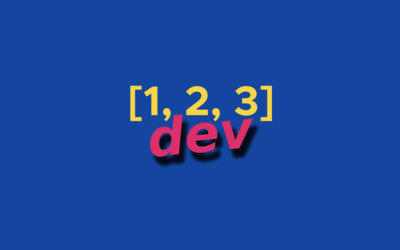Writing things from scratch and containers - 123dev #15
Posted on September 20, 2021 • 3 minutes • 451 words

Comments
Planning work
I’m sure many of you saw this gif in various places recently. There’s lots of similarities that are obvious from a software engineering perspective. To me it shows how difficult a re-write really is.
Estimating
“Most people overestimate what they can achieve in a year and underestimate what they can achieve in ten years.”
The same is true for what I can achieve in an afternoon and what I can achieve in a week.
Links
The data in this article was a bit surprising to me. Function instance size doesn’t matter and it seems nearly impossible to write a fast starting function if you need a common library like boto3. If your function is >15 MB you’re better off packaging it as a container.

Cold Starts in AWS Lambda | Mikhail Shilkov — mikhail.io Selection of languages, instance sizes, dependencies, VPC, and more
This was a thorough write-up of how to reverse engineer a Dockerfile using only the container image. It has been a long time since I’ve had to do this, and is very helpful to understand how container images work.
Reverse Engineering a Docker Image — The Art of Machinery This started with a consulting snafu: Government organisation A got government organisation B to develop a web application. Government organisation B subcontracted part of the work to somebody. Hosting and maintenance of the project was later contracted out to a private-sector company C. Company C discovered that the subcontracted somebody (who was long gone) had built a custom Docker image and made it a dependency of the build system, but without committing the original Dockerfile. That left company C with a contractual obligation to manage a Docker image they had no source code for. Company C calls me in once in a while to do various things, so doing something about this mystery meat Docker image became my job.
I read this book last month and really enjoyed it. I was going to link to the TED talk from the author, but it doesn’t do the book justice. My summary is you’ll have more good ideas with more diversity in people you hang out with and you should let hunches germinate over long periods of time. Lots of examples in the book for why your companies shouldn’t keep R&D research a secret and why working in an office is probably beneficial for innovation.
(this is an affiliate link)
Amazon.com: Where Good Ideas Come From: The Natural History of Innovation (Audible Audio Edition): Steven Johnson, Eric Singer, Penguin Audio: Audible Books & Originals Amazon.com: Where Good Ideas Come From: The Natural History of Innovation (Audible Audio Edition): Steven Johnson, Eric Singer, Penguin Audio: Audible Books & Originals
